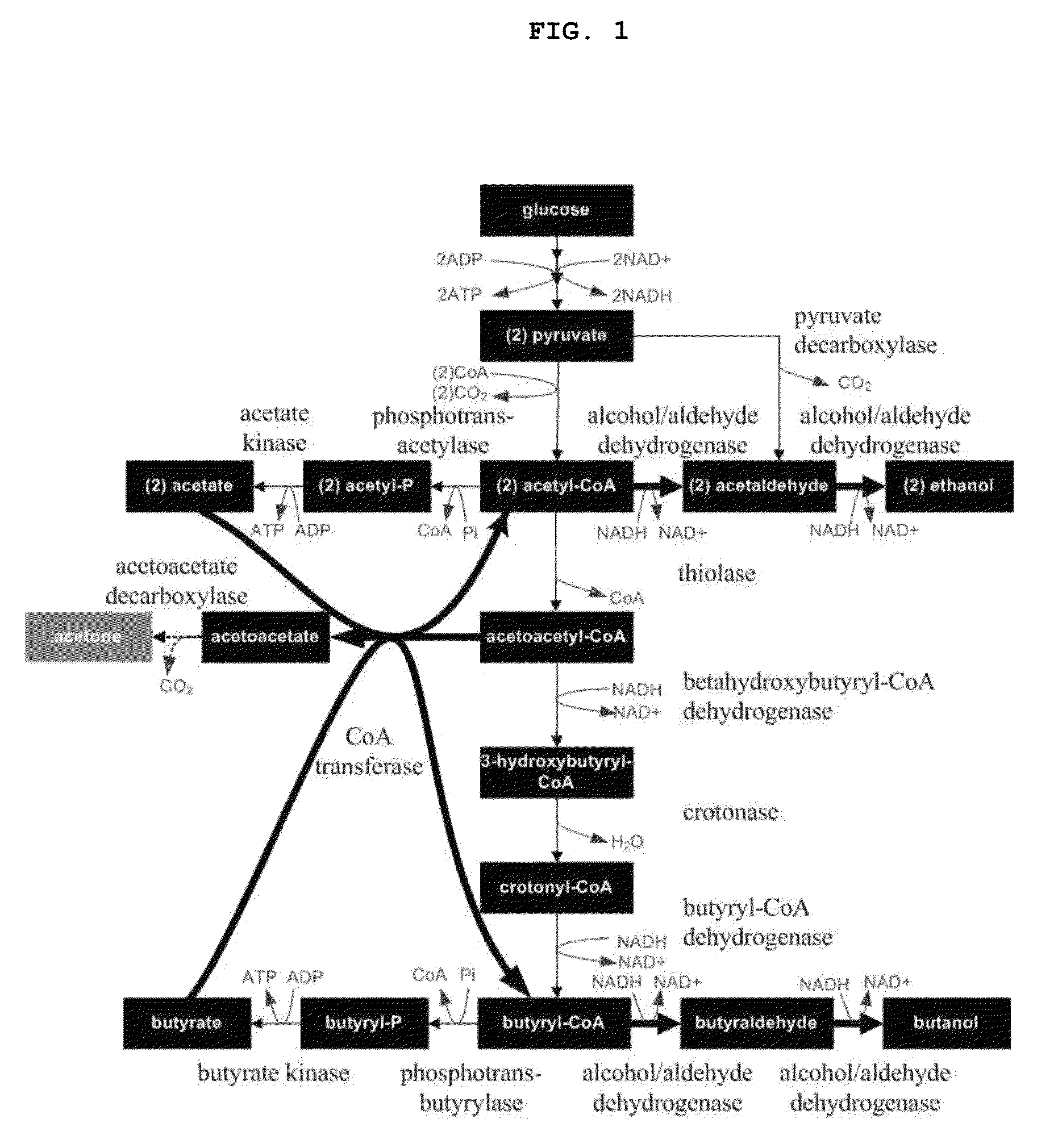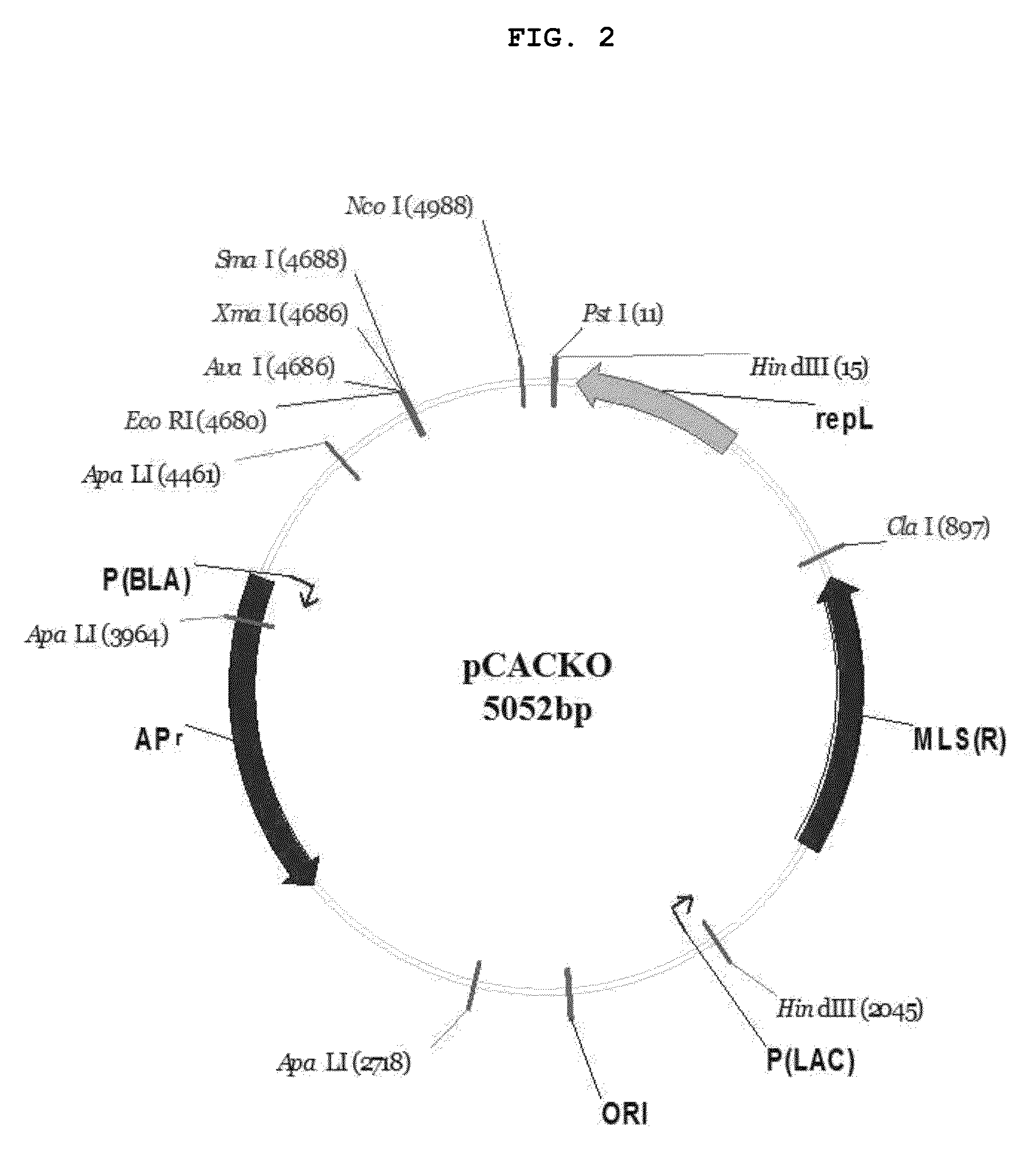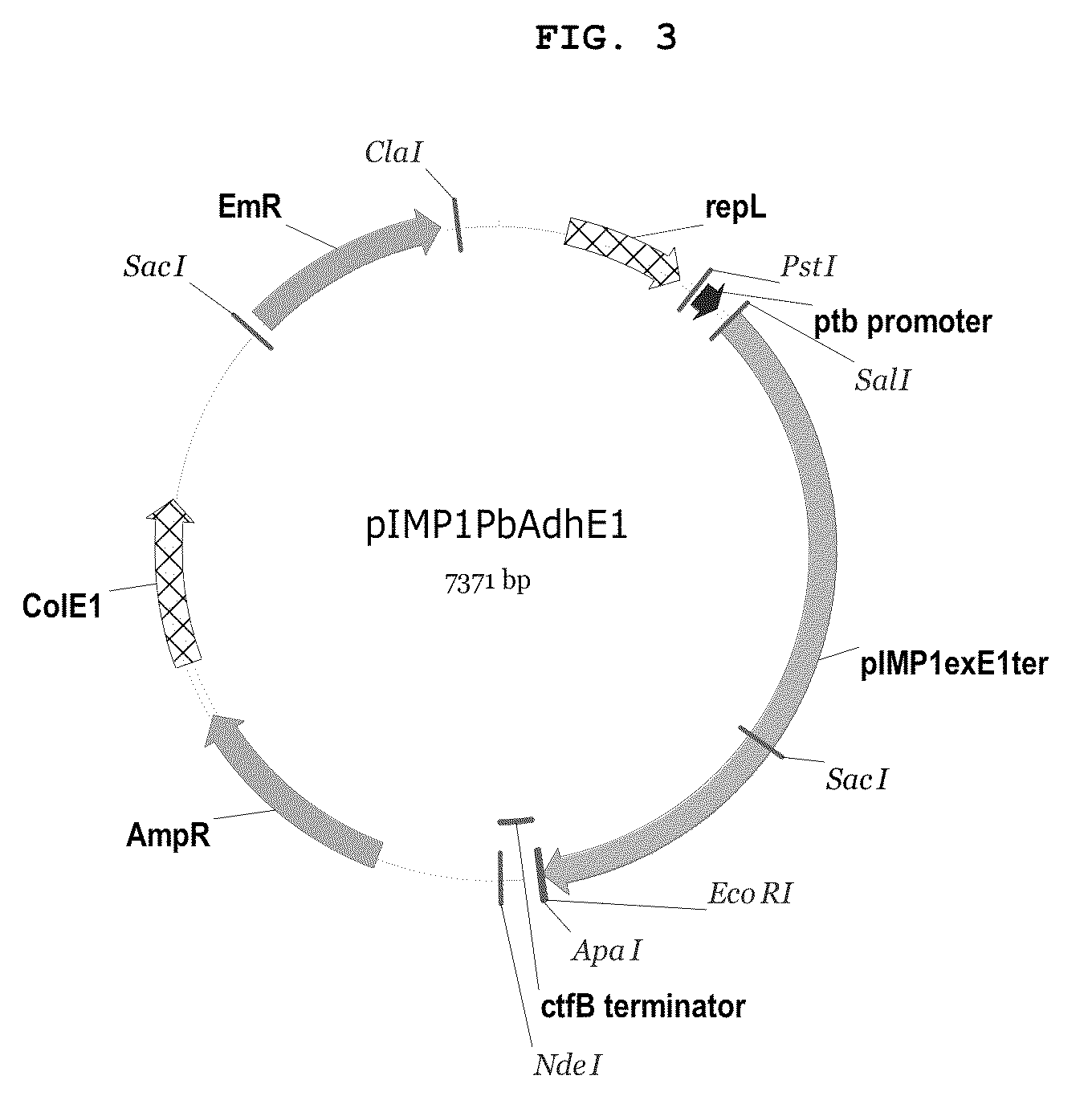Recombinant microorganisms having increased ability to produce butanol and method of producing butanol using the same
a technology of recombinant microorganisms and butanol, which is applied in the direction of biofuels, enzymology, transferases, etc., can solve the problems of increase separation costs, and show significant low yield and productivity, so as to reduce production and high efficiency
- Summary
- Abstract
- Description
- Claims
- Application Information
AI Technical Summary
Benefits of technology
Problems solved by technology
Method used
Image
Examples
example 1
Construction of Vector Comprising Mutant loxP Site and Antibiotic Resistance Marker
[0065]In the case of Clostridium acetobutylicum, an erythromycin resistance gene (hereinafter referred to as Emr) is mainly used as an antibiotic resistance marker for a vector. For gene deletion by double crossover recombination, an additional antibiotic resistance marker is required to select a strain in which a double crossover occurred. Thus, pSOS95-Cm that expresses a chloramphenicol / thiamphenicol resistance marker (hereinafter referred to as Thr) using the thiolase promoter of Clostridium acetobutylicum was used as a template for PCR. pSOS95-Cm can be constructed by cloning the thioloase promoter of the ATCC 824 strain into pSOS95 (Nair and Papoutsakis, J. Bacteriol., 176:5843-5846, 1994) and cloning a chloramphenicol / thiamphenicol resistance gene downstream of the promoter.
[0066]Also, after a gene was deleted by double crossover, the inserted antibiotic resistance marker should be removed for d...
example 2
Construction of pCACKO Vector
[0069]Gene deletion by homologous recombination is generally performed using a plasmid that is not replicated in cells. However, in the case of Clostridium acetobutylicum, it is known that the ratio of transformation is very lower than that in E. coli, and homologous recombination does not easily occur. For this reason, a replicable plasmid is preferably used. Thus, a vector that can delete a specific gene was constructed using the pMBKOT2 constructed in Example 1 and the shuttle vector pIMP1 (Nair and Papoutsakis, J. Bacteriol., 176:5843-5846, 1994) that is replicable in Clostridium acetobutylicum.
[0070]The restriction enzyme sequences in pIMP1 are not suitable, except for XmaI, because they digest the inside of the loxP-Thr-loxP sequence of pMBKOT2. For this reason, the restriction enzyme sequence NcoI that is not present in both pMBKOT2 and pIMP1 was added to pIMP1. PCR amplification was performed using about 300 base pairs (1155-1468 of L08752.1) lo...
example 3
Construction of Strain in which Acetate-Producing Pathway was Blocked
[0081]In order to delete the eutD gene involved in the acetate-producing pathway, strands (1890304-1890770 and 1890831-1891380 of NCBI RefSeq ID: NC—003030.1) comprising the ORF of eutD were amplified using a primer pair of SEQ ID NOS: 9 and 10 and a primer pair of SEQ ID NOS: 11 and 12, respectively. Herein, as the sequences to be amplified, templates having no NcoI and XmaI were selected. It was found that the two portions of the ORF contained in each of the amplified products did not overlap with each other and had the same orientation. Also, in order to insert a marker between the two strands, part of pMBKOT2 comprising loxP-Thr-loxP was amplified using primers of SEQ ID NOS: 13 and 14.
[0082]
[SEQ ID NOS: 9]:5′-CTAGCCATGGAGCATATGGGAGTGTGCTAAG-3′[SEQ ID NOS: 10]:5′-CGGCCAACGCTCGCAGTCAGGTATTATCAT-3′[SEQ ID NOS: 11]:5′-GCGAATGGCGAGATGAACTAGCTGATATTGCTATAA-3′[SEQ ID NOS: 12]:5′-ACGTCCCGGGCGAGTACAGTTTCATCCTTCATATC-3′...
PUM
| Property | Measurement | Unit |
|---|---|---|
| concentration | aaaaa | aaaaa |
| concentration | aaaaa | aaaaa |
| concentration | aaaaa | aaaaa |
Abstract
Description
Claims
Application Information
 Login to View More
Login to View More - R&D
- Intellectual Property
- Life Sciences
- Materials
- Tech Scout
- Unparalleled Data Quality
- Higher Quality Content
- 60% Fewer Hallucinations
Browse by: Latest US Patents, China's latest patents, Technical Efficacy Thesaurus, Application Domain, Technology Topic, Popular Technical Reports.
© 2025 PatSnap. All rights reserved.Legal|Privacy policy|Modern Slavery Act Transparency Statement|Sitemap|About US| Contact US: help@patsnap.com



